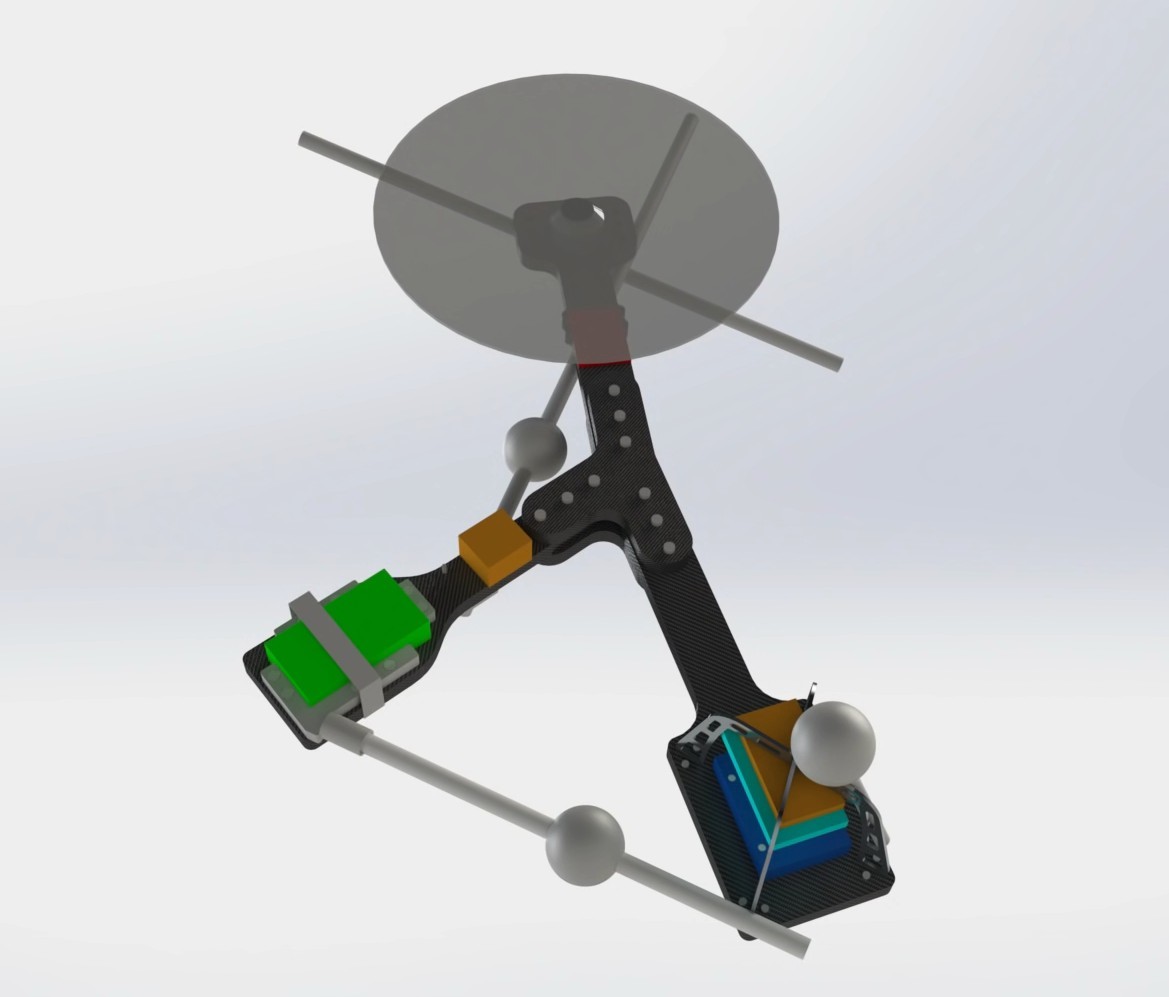The world's first asymmetric single-piece drone

Engineers from the Institute of Dynamic Systems and Management of the Swiss Higher Technical School of Zurich (ETH Zurich) designed an aircraft with a single moving part, which is called “the first in the world” [in fact, similar experiments were carried out before, see in the comments - note].
The modern helicopter has thousands of moving parts. The first aircraft had two moving parts: a screw and a tail turn signal. In ETH Zurich made a controlled aircraft in general with one moving part. The copter called monospiner (Monospinner) is the mechanically the simplest controlled flying structure among all existing ones. It has only a propeller, no additional drives or aerodynamic surfaces.
Monospiner does not know how to hang, like a normal multicopter. Its propeller is not directed upwards, but to the side. Nevertheless, the engineers managed to achieve a balance between gravity and the lift of the screw, calculating the vectors of all forces.
')


Thus, the monospiner is still able to maintain dynamic equilibrium and maintain its position in space approximately in one place, if it maintains a constant angular velocity and propeller thrust.

However, while this is not possible without feedback. The video shows that in an autonomous hangup without feedback, the equilibrium quickly disappears.
Monospiner has one more drawback - it cannot rise into the air from a horizontal position, when the screw is directed upwards, so it must always be launched from the hand.
It is difficult to say what advantages this device has over ordinary multicopter, except for a simpler design. For example, such a model makes it possible to better maintain dynamic equilibrium under conditions of strong disturbances of the air environment. The drone is able to effectively exit the state of uncontrolled rotation.
By the way, at the Institute of Dynamic Systems and Management of the Swiss Higher Technical School of Zurich, they conduct very interesting experiments with aircraft of non-traditional design. For example, another recent development is an eight - screw omnicopter with six degrees of freedom.



“The omnicopter is a reliable future drone,” says Professor Raffaello D'Andrea, who heads the development of unusual UAVs at Zurich Swiss High School. “If any part fails, the engine or battery pack, or one of the halves of the drone shuts down completely, the damaged omnicopter will still fly where it should. If monospinner is an example of economy, then this device, an omnicopter with eight screws, is an example of redundancy. What do all these excesses give us? Please note that the design is very symmetrical, therefore orientation in space does not matter for it. This opens up extraordinary possibilities! A drone can move in the air regardless of where the top is and where the bottom is and how it rotates. True, the drone has its own difficulties, mainly related to the interaction of flows from eight propellers. ”
Recently, Professor D'Andrea gave a very interesting lecture at the TED2016 conference in Vancouver ( mp4 , there is a transcript in Russian). He introduced omnicopter, Monospinner and other unusual aircraft.
In his speech, the professor once again reminded that practical use is not the main goal in the development of new aircraft structures, and indeed in any scientific and technical developments: “The reality is that it is difficult to predict the impact of new technologies. For people like us, the main reward is the work process itself and the joy of creativity. This is a constant reminder of what a wonderful and magical universe we live in - it allows clever, inventive creatures to create so effectively and vividly. The fact that these technologies have huge commercial and economic potential is only the cherry on the cake, ”he said.
Source: https://habr.com/ru/post/393527/
All Articles